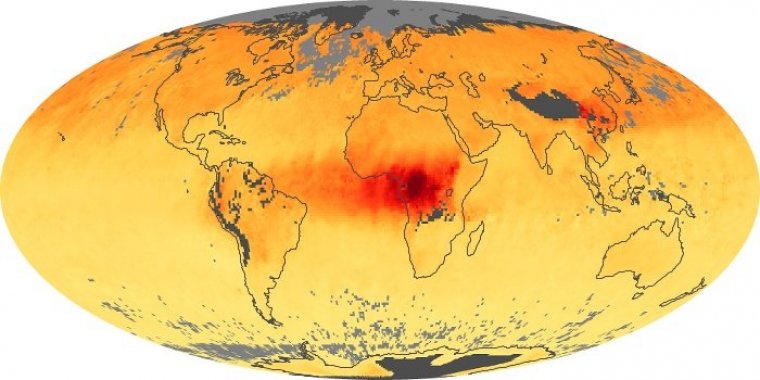| News / Science News |
Giant underwater waves affect the ocean’s ability to store carbon
An international team of researchers, led by the University of Cambridge, the University of Oxford, and the University of California San Diego, quantified the effect of these waves and other forms of underwater turbulence in the Atlantic Ocean and found that their importance is not being accurately reflected in the climate models that inform government policy.

Giant underwater waves affect the ocean’s ability to store carbon. Photo: NASA
Most of the heat and carbon emitted by human activity is absorbed by the ocean, but how much it can absorb is dependent on turbulence in the ocean’s interior, as heat and carbon are either pushed deep into the ocean or pulled toward the surface.
While these underwater waves are already well-known, their importance in heat and carbon transport is not fully understood.
The results show that turbulence in the interior of oceans is more important for the transport of carbon and heat on a global scale than had been previously imagined.
Ocean circulation carries warm waters from the tropics to the North Atlantic, where they cool, sink, and return southwards in the deep ocean, like a giant conveyer belt.
The Atlantic branch of this circulation pattern, called the Atlantic Meridional Overturning Circulation (AMOC), plays a key role in regulating global heat and carbon budgets.
Ocean circulation redistributes heat to the polar regions, where it melts ice, and carbon to the deep ocean, where it can be stored for thousands of years.
“If you were to take a picture of the ocean interior, you would see a lot of complex dynamics at work,” said first author Dr Laura Cimoli from Cambridge’s Department of Applied Mathematics and Theoretical Physics.
“Beneath the surface of the water, there are jets, currents, and waves – in the deep ocean, these waves can be up to 500 metres high, but they break just like a wave on a beach.”
“The Atlantic Ocean is special in how it affects the global climate,” said co-author Dr Ali Mashayek from Cambridge’s Department of Earth Sciences.
“It has a strong pole-to-pole circulation from its upper reaches to the deep ocean. The water also moves faster at the surface than it does in the deep ocean.”
Over the past several decades, researchers have been investigating whether the AMOC may be a factor in why the Arctic has lost so much ice cover, while some Antarctic ice sheets are growing. One possible explanation for this phenomenon is that heat absorbed by the ocean in the North Atlantic takes several hundred years to reach the Antarctic.
Now, using a combination of remote sensing, ship-based measurements and data from autonomous floats, the Cambridge-led researchers have found that heat from the North Atlantic can reach the Antarctic much faster than previously thought. In addition, turbulence within the ocean – in particular large underwater waves – plays an important role in the climate.
Like a giant cake, the ocean is made up of different layers, with colder, denser water at the bottom, and warmer, lighter water at the top. Most heat and carbon transport within the ocean happens within a particular layer, but heat and carbon can also move between density layers, bringing deep waters back to the surface.
The researchers found that the movement of heat and carbon between layers is facilitated by small-scale turbulence, a phenomenon not fully represented in climate models.
Estimates of mixing from different observational platforms showed evidence of small-scale turbulence in the upper branch of circulation, in agreement with theoretical predictions of oceanic internal waves.
The different estimates showed that turbulence mostly affects the class of density layers associated with the core of the deep waters moving southward from the North Atlantic to the Southern Ocean.
This means that the heat and carbon carried by these water masses have a high chance of being moved across different density levels.
“Climate models do account for turbulence, but mostly in how it affects ocean circulation,” said Cimoli. “But we’ve found that turbulence is vital in its own right, and plays a key role in how much carbon and heat gets absorbed by the ocean, and where it gets stored.”
The research suggests an urgent need for the instalment of turbulence sensors on global observational arrays and a more accurate representation of small-scale turbulence in climate models, to enable scientists to make more accurate projections of the future effects of climate change. (University of Cambridge)
YOU MAY ALSO LIKE





